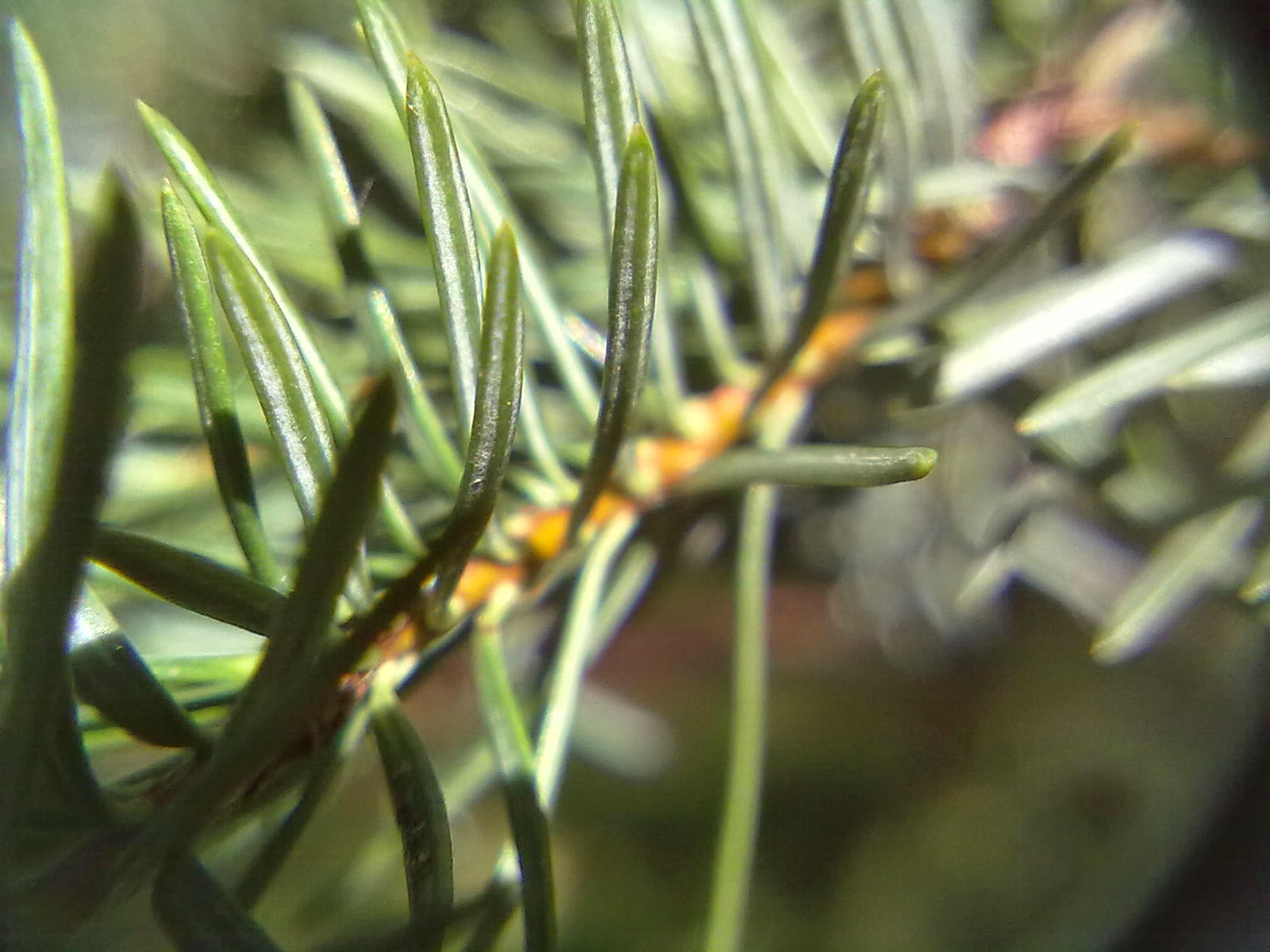Overall tree shape (right) shows branches ascending at tips.
Last year the foliage on this tree was so dirty - covered in algae, soot, road dirt etc - that we were unable to ID it, we were not even certain what type of conifer it was.
Usually the leaf attachment tells you what genus you are looking at.
In this case we thought last year that the leaves had green petioles (stalks) and it was therefore a Tsuga, and we keyed it out to be Tsuga dumosa (Himalayan Hemlock), but we were not completely convinced.
This year, there was a whole spread of new, clean foliage and we now thought we could see cones in the upper branches, and they were standing upright above the branch, which would suggest Fir (Abies), rather than Tsuga.
The cones (which I could barely see) appeared to have projecting bracts, and to be squat, and dumpy (Two of the less well known dwarves).
A close look at the cleaner foliage suggested it might indeed be Abies, especially when the removal of a couple of leaves left what are clearly round leaf scars:
 |
| Leaf scars |
 |
| Looks like petioles |
And you can see why we would have thought it was a Tsuga, these leaves look just as though they have a slightly twisted, green, petiole.
 |
| Bark |
 |
| Stem |
And here's a close-up of the stem, which I would define as glabrous, ie not hairy.
As opposed to glaucous, meaning blue-ish.
I keep getting those two confused.
 |
| Leaf tips |
Leaf tip close up - not notched.
Most Abies species are notched at the tip - the usual exception is Abies concolour, White Fir. But they have leaves the same colour on both sides, which is not the case here.
Mind you, they do appear to have stomatal bands on both surfaces, although they are much broader, whiter, and more clearly defined on the underside.
 |
| Trunk |
A shot of the trunk, in case it helps.
 |
| Underside |
Showing the underside of the leaf, two wide stomatal bands visible, plus you can see there is a parting underneath, but not a totally clear one.
The leaves, when crushed, had a faint citrus smell - I thought it was grapefruit, but I'm not good at putting names to smells.
Finally, here's a shot of the bud at the tip of a shoot.
I would describe it as yellowy-green, and resinous.
This shoot is twisted round so it's almost upside down - it shows the parting underneath the shoot, being clearly a parting, but not a completely clear parting, if you see what I mean.
We keyed this one out to be Abies delavayi, but the leaves are not curled back along their margins.
We're confused!


